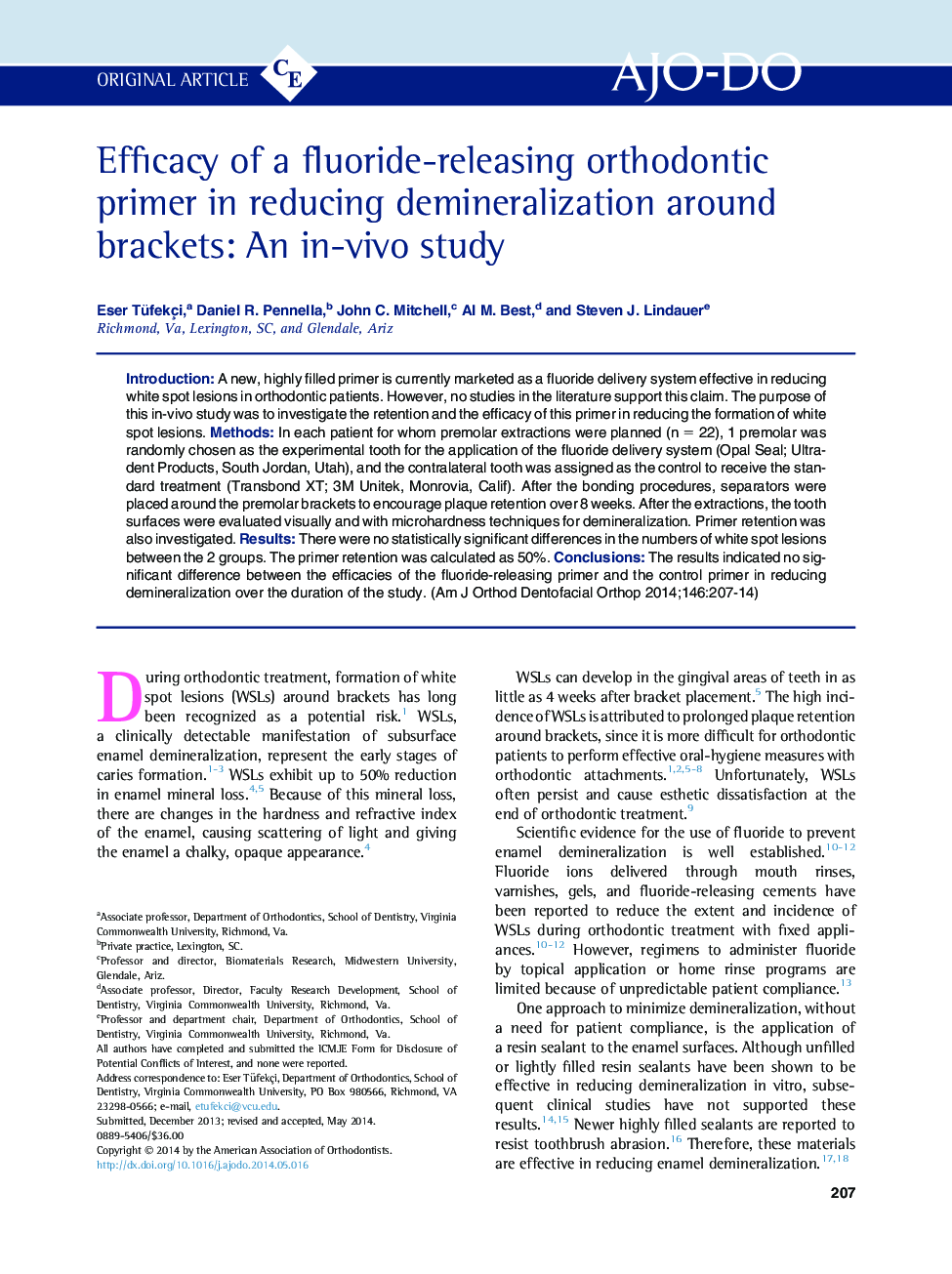| Article ID | Journal | Published Year | Pages | File Type |
|---|---|---|---|---|
| 3116417 | American Journal of Orthodontics and Dentofacial Orthopedics | 2014 | 8 Pages |
IntroductionA new, highly filled primer is currently marketed as a fluoride delivery system effective in reducing white spot lesions in orthodontic patients. However, no studies in the literature support this claim. The purpose of this in-vivo study was to investigate the retention and the efficacy of this primer in reducing the formation of white spot lesions.MethodsIn each patient for whom premolar extractions were planned (n = 22), 1 premolar was randomly chosen as the experimental tooth for the application of the fluoride delivery system (Opal Seal; Ultradent Products, South Jordan, Utah), and the contralateral tooth was assigned as the control to receive the standard treatment (Transbond XT; 3M Unitek, Monrovia, Calif). After the bonding procedures, separators were placed around the premolar brackets to encourage plaque retention over 8 weeks. After the extractions, the tooth surfaces were evaluated visually and with microhardness techniques for demineralization. Primer retention was also investigated.ResultsThere were no statistically significant differences in the numbers of white spot lesions between the 2 groups. The primer retention was calculated as 50%.ConclusionsThe results indicated no significant difference between the efficacies of the fluoride-releasing primer and the control primer in reducing demineralization over the duration of the study.
